
The Northwest's Favorite Planes, 2022
Northwest control-line model airplane fliers are invited to submit photos and information about their planes for posting on the Flying Lines Favorite Planes page.
Ken Burdick's Wow

Ken Burdick built this Wow, a 1950s vintage Combat plane. The Wow is the subject of a Flying Lines construction article. Ken Burdick photo.
Steve Wolf's Miss Behave
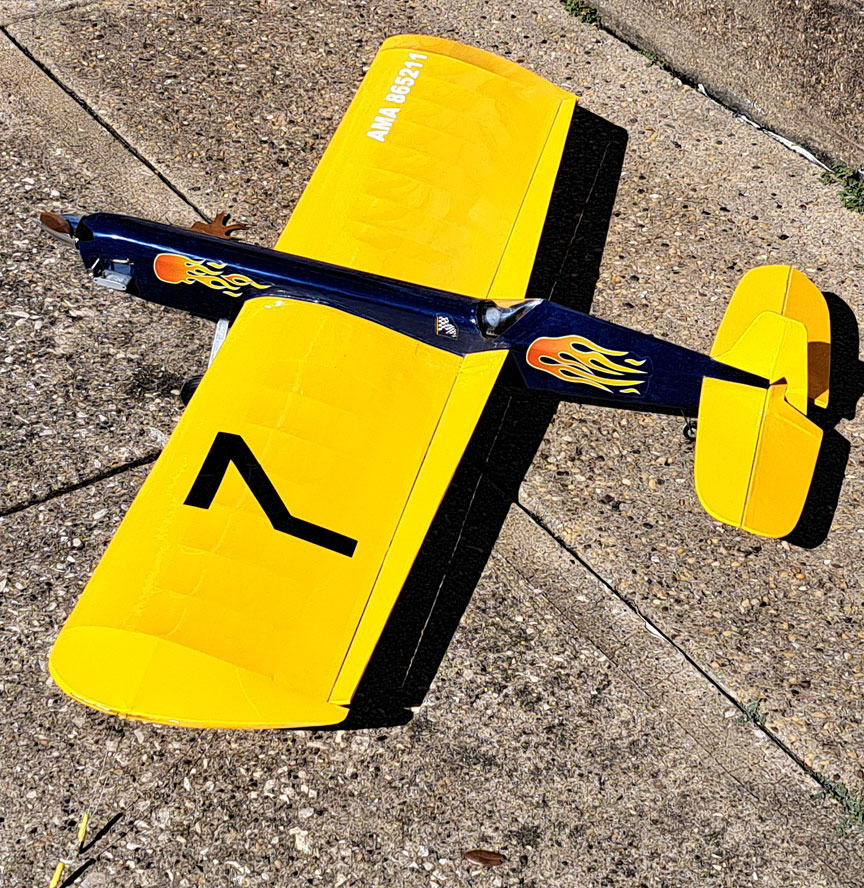
Flying Lines reader Steve Wolf of Dallas, Texas, recently built this Johnnie Casburn Miss Behave, after having the kit in its box for about 40 years. Casburn operated a hobby shop in the Fort Worth area in the 1950s. Power is an Evolution 36. Steve Wolf photo.
Gene Pape's FAWF
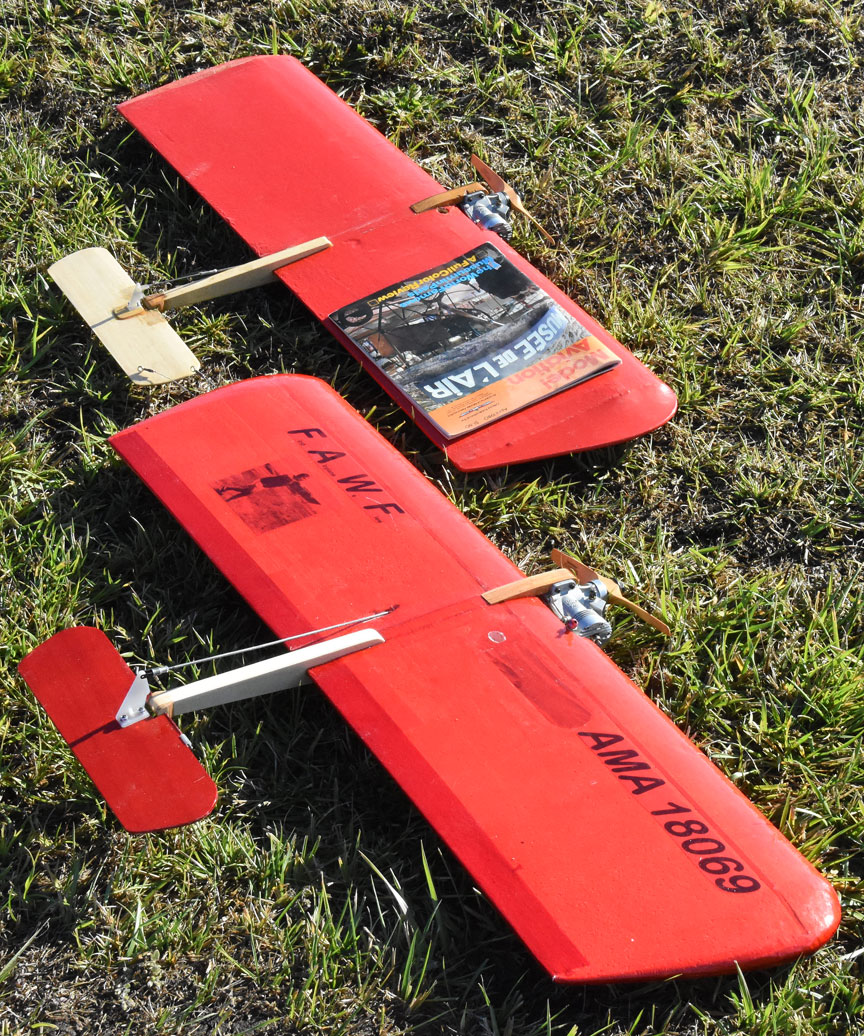
In the late 1970s, three or four of the Northwest's top Combat fliers got together for a flying session at the Eugene Prop Spinners' flying site, which was then at the Eugene Airport. The purpose of the session was to test several new AMA Fast Combat designs they had come up with. After a day of flying, they decided that the best-flying plane was the "First Airplane We Flew." That was the red plane at the top of this photo, designed by Gene Pape, which became known as the FAWF and was published in a design article in the April 1980 Model Aviation magazine. Recently as part of his journey into Combat history, Gene built a brand-new FAWF, shown here at the Prop Spinners' current field in the Junction City, Ore., area. Powered by a period-correct Fox Combat Special Mark III .36, the new FAWF is still an excellent Combat performer. Flying Lines photo.
Gary Weems' Tigerize
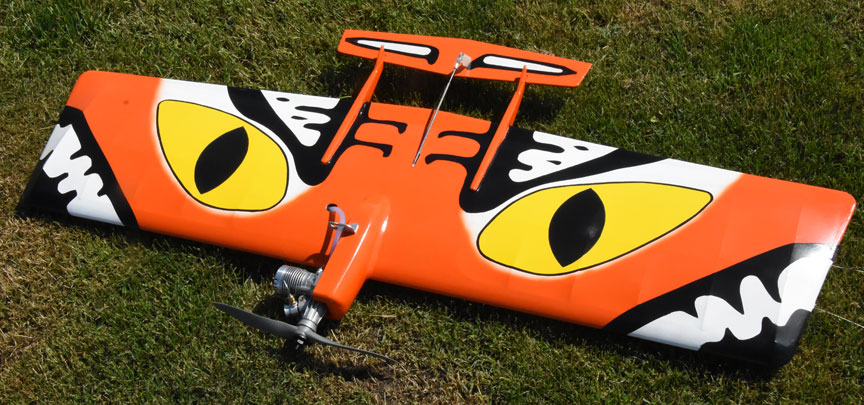
Perfect for Halloween: Gary Weems of Alpine, Ore., built this vintage Combat Cat with a dope-and-silkspan finish, painted to look like a tiger. He calls it Tigerize. Power is a K&B .28. Looks great in the air! Seen here at the Eugene Prop Spinners' Can Do Ranch flying site. Flying Lines photo.
Mike Massey's Caprice
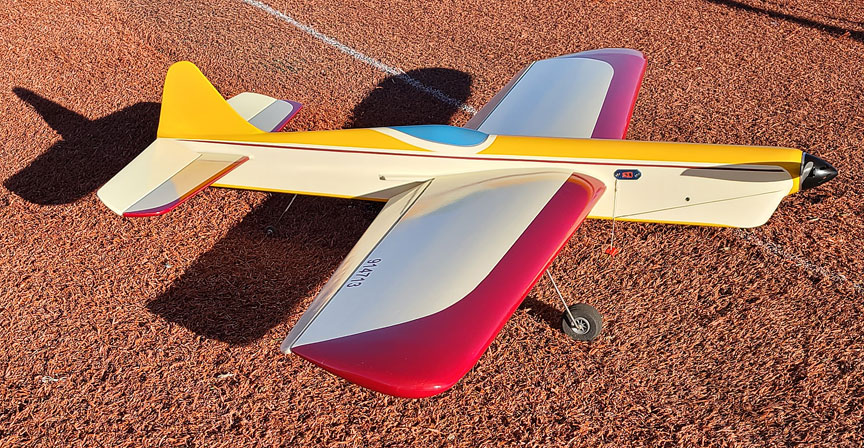
Mike Massey of Eagle Point, Ore., built this Caprice from scratch except for using wing panels prepared by designer Bob Hunt. Power for this Classic Stunt competitor is a Badass 2860 690kv motor with a 5-cell 2800mah Thunderpower battery. Mike Massey photo.
Salem mystery plane

When they arrived at Bill Riegel Model Airpark in Salem, Ore., to set up for the Northwest Speed & Carrier Bash on Oct. 15, 2022, Western Oregon Control-Line Flyers club members found this control-line stunter and a bin of engines and field gear in front of the equipment shed, apparently abandoned and left as a donation to the club. No note or other clue as to the donor was found. Can you identify the plane? WOLF would like to thank the donor! Mike Hazel photo.
Steve Wolf's Mustunt
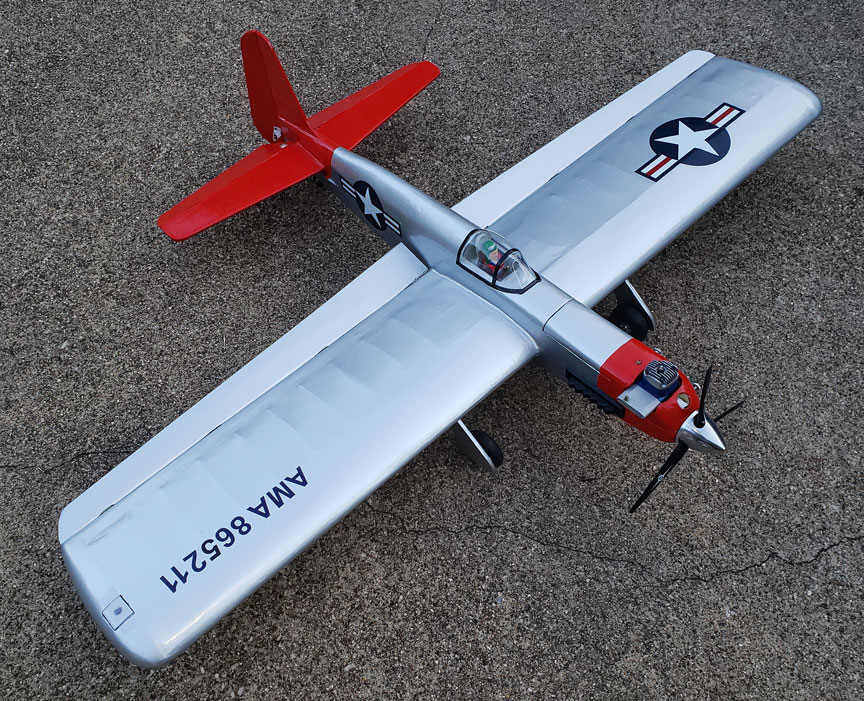
Flying Lines reader Steve Wolf of Dallas, Texas, sent this photo of his Mustunt, powered by an O.S. .40LA. Construction used a Twister wing rib set, Brodak warbird landing gear and Rabe-style movable rudder. Steve Wolf photo.
Richard Fallas' Mig

Richard Fallas of Dairy Flat, New Zealand, made an unusual use of a Ukranian-made F2D Combat wing. Richard turned it into a model that suggests the Mig 25-style jet. It's powered by an OS .25FP. Richard reports that the project, "concieved during jet lag," is reversible, so the plane could return to its Combat configuration. Construction of the added parts is a mixture of balsa and 3D-printed components, and Richard says the plane flies well on 52-foot lines. Gerald Wimmer photo.
Mike Potter's F7U Cutlass

Mike Potter of Auburn, Wash., built this plane for Northwest Sport 40 Carrier. It's modified from 1969 American Modeler plans by "Wild Bill" Netzeband to resemble a Chance/Vought F7U Cutlass. Power is an OS .40FP. Mike Potter photo.
Glen Allison's Wildman 60
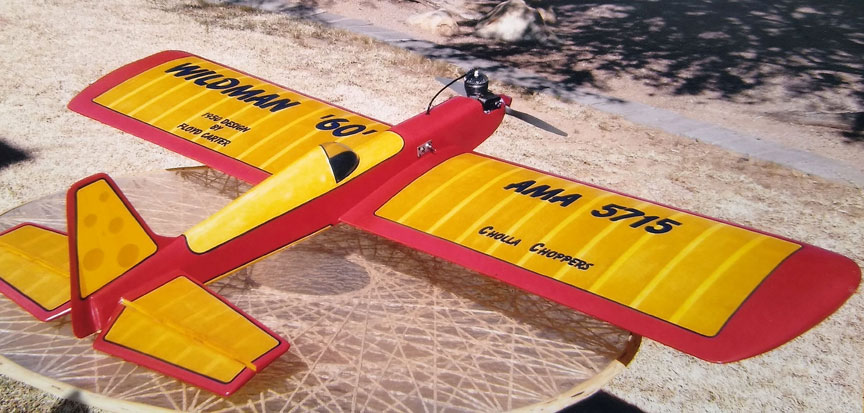
The Wildman 60, designed in 1950 by teenager Floyd Carter, now of Eugene, Ore., is a popular Old-Time Stunt airplane. Floyd sent FL this photo of a Wildman 60 built by Glen Allison of Tucson, Ariz. Glen's plane is powered by a spark-ignition Spitfire .65 and has been flown in recent Vintage Stunt Championships contests in Tucson. Glen Allison photo.
Fred Cesquim's All (South) American Sr.


It's a familiar control-line airplane but painted in unusual colors. The All American Sr. is usually seen in red, white and blue. Regular Flying Lines contributor Frederico Cesquim of São Paulo, Brazil, tells the story of his this build: I was gifted this kit two years ago by a longtime friend. Back in 1986 when I started with model airplanes as a youngster, I met this gentlemen and he invited me to see his models and talk about control line. When I spotted an original All American Senior kit by Dmeco I was amazed. Such a rarity in Brazil! As an impressive youngster I was dreaming with that kit, just for the fact of being imported, but the 50s look of the plane also caught my imagination. Decades later he came to visit my city and gifted me the model. While looking for the plane information and pictures, I decided the use the same stars and bars but with a “Brazilian” twist. So I opted to use Brazilian flag colors and a bit of liberty on the original scheme. Model was covered with polyspan and painted with automotive lacquer. Fred Cesquim photos.
Tom Kopriva's Lieutenant

The late Tom Kopriva of Eugene, Ore., built this classic stunter called Lieutenant, several years ago. The original plane, designed by Leroy Ducharme, was featured in the January 1958 issue of Model Airplane News. It also is in "Classic Era Construction Drawings" by Tom Morris. Power is a Tom Dixon-modified Fox .35. The plane, covered with silk, weighs 36 oz. Ownership was transferred to CL flier Gerald Schamp of Albany, Ore, and later to theEugene Prop Spinners after Tom's death. It now is being flown by Prop Spinner Mike Hazel. The plane is seen here at a Eugene Prop Spinners Can Do Ranch flying session in July 2022. Flying Lines photo.
Floyd Carter's Neptune
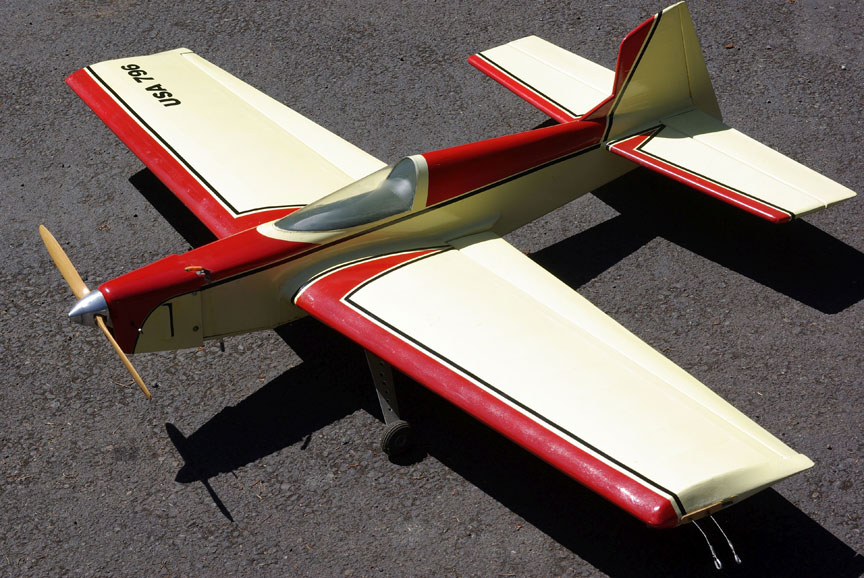
Floyd Carter of Eugene, Ore., built this original-design stunter called Neptune in 2014. Power is a RO-Jett .61RE. Floyd offers full-size construction plans for this plane and some of the others of his designs featured in the Favorite Planes section. Floyd Carter photo.
Rod Claus' Gee Bee R3

Rod Claus of Kent, Wash., built this stunning Profile Stunt plane, an electric rendition of the Gee Bee R3, designed by Claus and Pat Johnston. Construction is from a Johnston kit. Wingspan is 53.75 inches, and area is 554 square inches. Motor is a BA 2820 910KV, with Thunder Power 4S2800 battery and a Castle Edge lite 50-amp ESC. Propeller is APC 11x5.5. Randy Ling photo.
Bruce Perry's Scarlet Witch
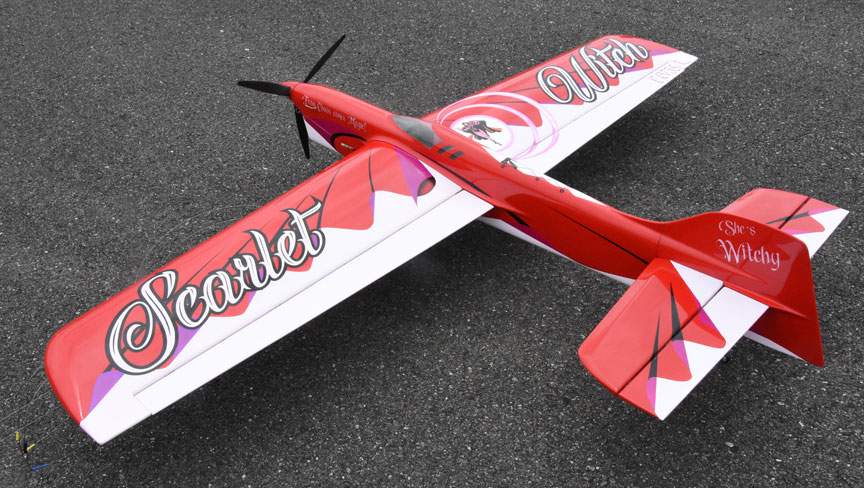
One of the highlights of the 2022 Northwest Control-Line Regionals was seeing Bruce Perry's Scarlet Witch up close. Photos don't capture the beauty of this Precision Aerobatics masterpiece. Bruce is from Edmonton, Alberta. Flying Lines photo.
Mike Hazel's Giant Ringmaster

Mike Hazel's Giant Ringmaster has a 73-inch wingspan and is powered by an O.S. .90. For comparison, his Micro Ringmaster, powered by Cox .010. Planes are seen at a Eugene Prop Spinners flying session at the Can Do Ranch in Junction City, Ore., on May 21, 2022. Flying Lines photo.
Ricardo Vieira's Banshee

Flying Lines reader Ricardo Vieira of Montreal, Quebec, recently built this Sig Banshee. He shortened the nose, changed the size of the rudder, modified the flaps and added sheeting to the leading edge. Power is an OS .40FP. Ricardo Vieira photo.
Jim Aron's Systréma 2

Jim Aron's Systréma 2 was winner of the Concous d' Elegance award at the 2022 Northwest Control-Line Regionals in Roseburg, Ore. Flying Lines photo.
Dennis Nunes' Circulas 61e
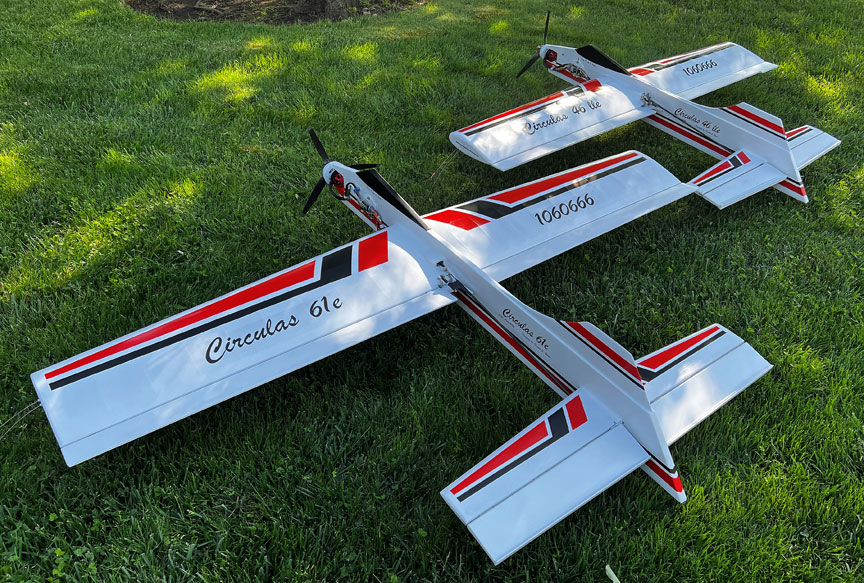
Dennis Nunes of Stockton, Calif., has produced another in his series of Circulas designs for Stunt. The Circulas 61e in the foreground is the "big brother" of the Circulas 46 IIe featured here previously, and shown in the background. Dennis Nunes photo.
Mike Haverly's Fait Accompli

The Jim Walker Memorial Spring Tune-Up in Portland, Ore., is when we get a chance to see some of the Northwest's new Precision Aerobatics beauties. This is Mike Haverly's Fait Accompli, seen at the 2022 Jim Walker Memorial -- it's not actually new but is his Fifth Element, refurbished and repainted, with a new stab and elevator and landing gear moved from the wing to the fuselage. Steve Lindstedt photo.
Fred Cesquim's Smith Miniplane
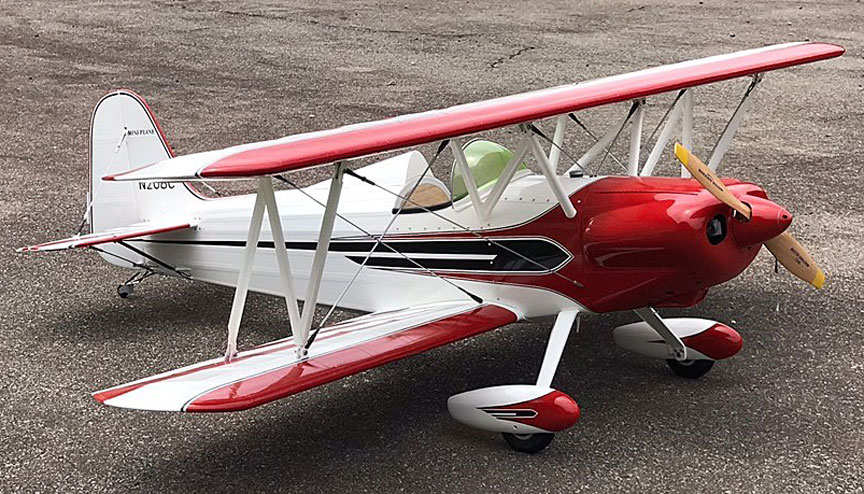
Frequent Flying Lines contributor Frederico Cesquim of São Paulo, Brazil, built this Smith Miniplane in 84 days as he rushed to get ready for the 2021 Brazilian Nats. See the article that tells the story. Fred Cesquim photo.
Chris Cox's Miggish

Chris Cox of Delta, B.C., has produced his annual Precision Aerobatics masterpiece. This is his 2022 Miggish, with electric power. Because of the difficulty of finding good light balsa wood, Chris built the plane entirely of composite materials such as Airex foam, fibreglass cloth and epoxy. Chris Cox photo.
Lickleys' Vampire

John and Lynette Lickley of Redmond, Ore., built this Vampire from a Brodak kit. Power is an Enya .25. Finish is butyrate dope. Flying weight is 24.5 oz. The plane is seen at the 2022 Western Oregon Control-line Flyers' annual general meeting in Salem, Ore. Flying Lines photo.
Paul Walker's 2022 Maximum Impact
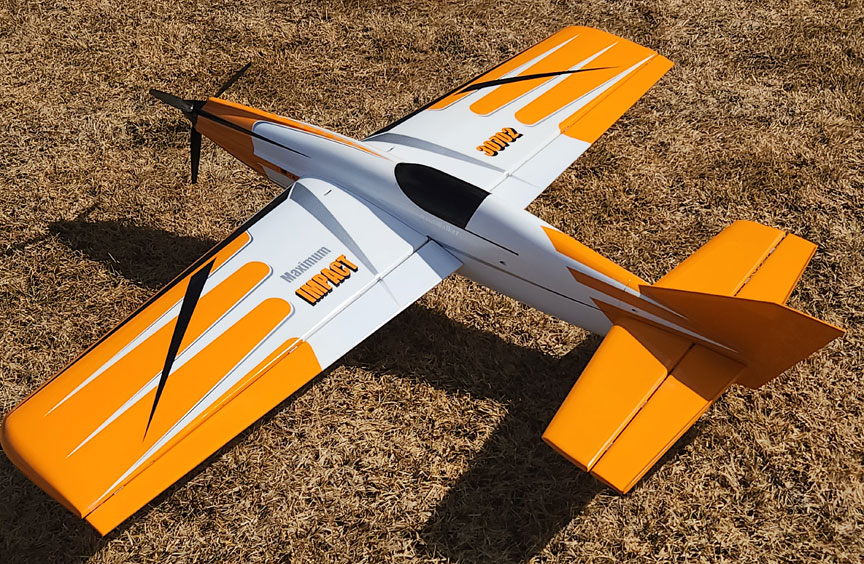
Paul Walker's 2022 version of his electric Impact airplane for Precision Aerobatics uses the same geometry as his planes of the past few years. The 67-oz. stunter is powered by a Badass 3515-710 motor using Li-ion 6S 2600 battery and an Igor Burgar 12x5 three-blade prop. Paul Walker photo.
Gene Pape's Nemesis II

Here's another "nostalgia" Combat plane by Gene Pape of Eugene, Ore. It's a Nemesis II, designed in 1963 by Howard Rush. Power is a period-correct SuperTigre G21 .35. The plane is seen at the Eugene Prop Spinners' Orchard Point flying field. Flying Lines photo.
Bartlett/Lickley Skyraider

One of the stars of 2022 Oregon Flying Fun No. 3 in Salem, Ore., was this Skyraider Navy Carrier plane, originally built by Craig Bartlett of Adair Village, Ore., many years ago and restored and reconfigured for Northwest Sport 40 Carrier by John and Lynette Lickley of Redmond, Ore. Power is an OS .35FP engine. Finish is Koverall, Randolph dope and Monokote trim. Steve Lindstedt photo.
Jim McCartney's Me-109

Jim McCartney of Lake Tapps, Wash., built this Midwest Me-109, with O.S. .40LA power. Monokote and automotive paint finish. Mike Potter photo.
Gene Pape's Voodoo
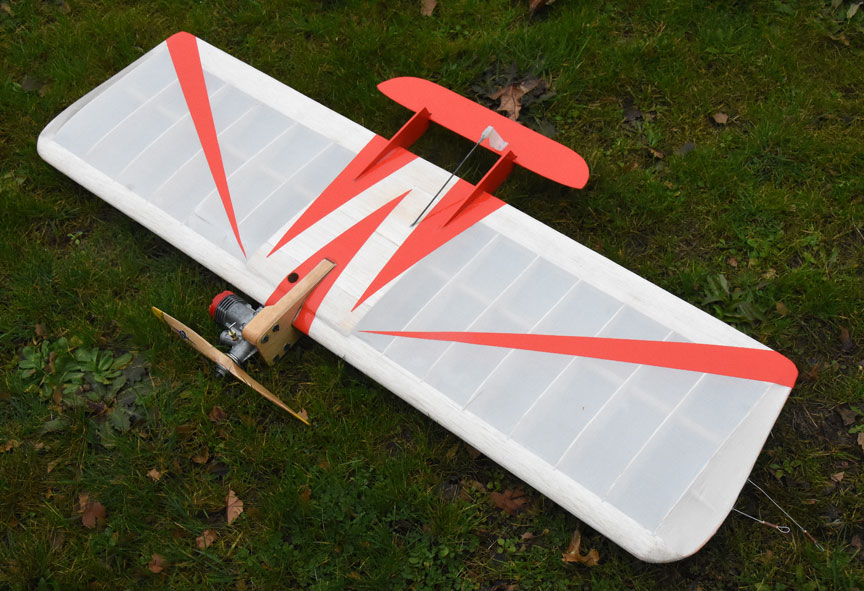
Here's another in our series of vintage Combat planes. This is Gene Pape's Voodoo, powered by a Fox Rocket .35. Finish is laminating film over silk, with Econokote trim, as describe in Gene's March 2021Miscellaneous Stuff column. The system uses no dope at all and results in a shiny, flawless finish. Flying Lines photo.
Thompson Undertaker/Pape Devastator
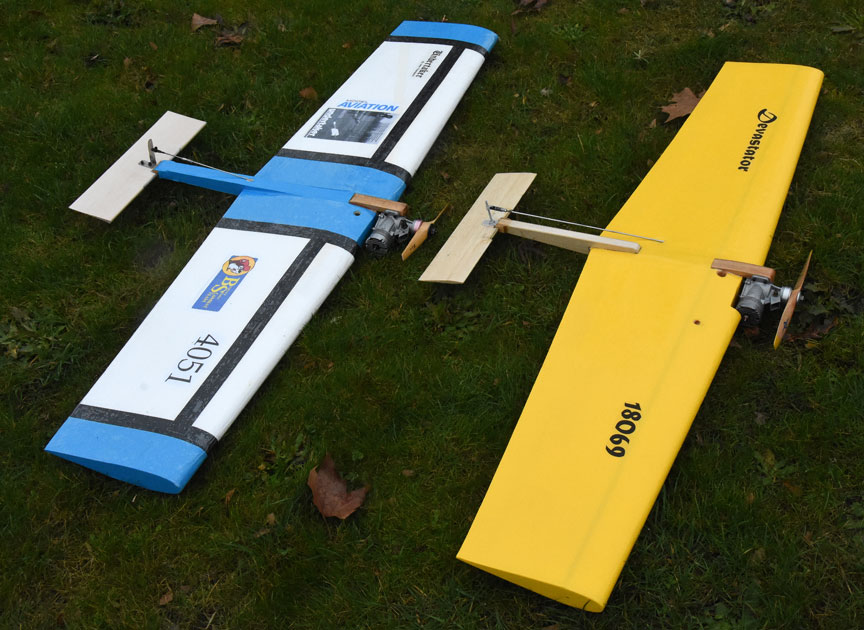
Recently there has been interest in vintage Combat planes, with lots of Sneekers, VooDoos, Half-Fasts and other late-1950s, early-1960s planes showing up on flying fields. These two planes don't quite fit the "vintage" category, but more appropriately fit into the "nostalgia" category, the same way Classic Stunt planes recall an earlier era without quite being "Old-Time." At right is Gene Pape's late-1970s Devastator, powered by a Fox Combat Special Mark III. At left is John Thompson's early 1980s Undertaker, powered by a Fox Combat Special MkVI. Both are recent builds, just for fun flying and display, seen above at a Eugene Prop Spinners flying session in January 2022. Both are great fliers that probably would compete well in AMA Fast Combat today, if they had contemporary Nelson power. Incidentally, plans for the Undertaker, published in Model Aviation in October 1985, are still available from the Academy of Model Aeronautics plans service. Ask for plan No. 489. Flying Lines photo.
Larry Lewin/Henry Hajdik P-40
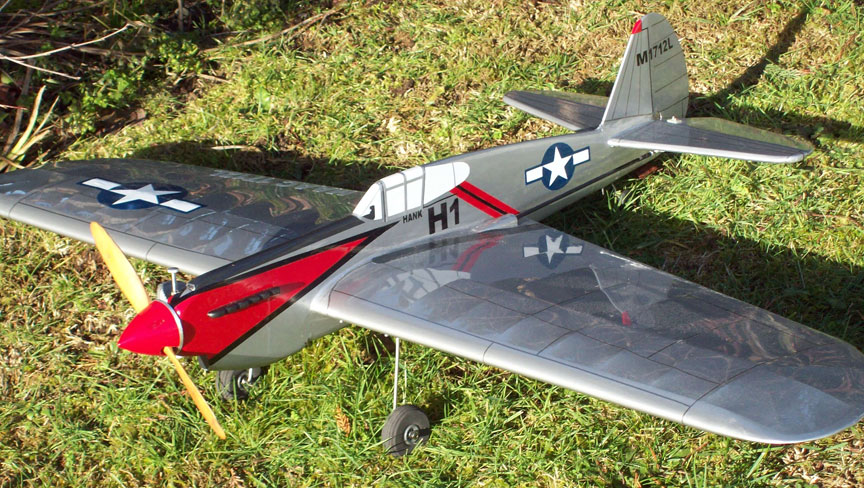
Larry Lewin of Abbotsford, B.C., built this P40 for his friend Henry Hajdik. The plane is built from a Carl Goldberg kit and powered by an O.S. .25LA. Covering is Monokote. It's so nice, we're including two views. More photos and details are available on the Pacific Aeromodellers Club Facebook page. Larry Lewin photos.
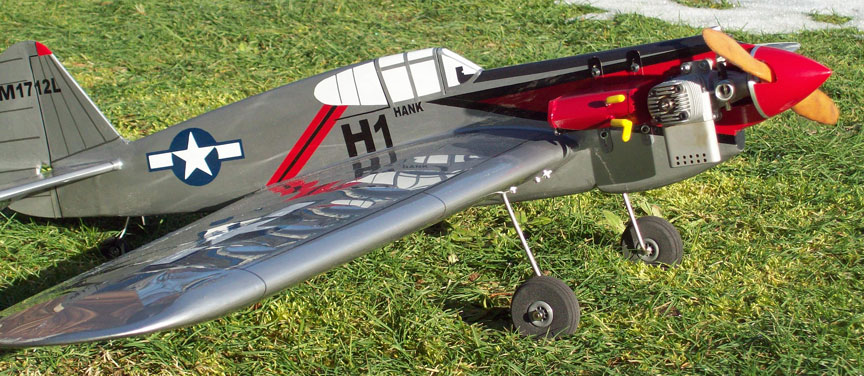
Mike Hazel's 2022 Super Sport racer
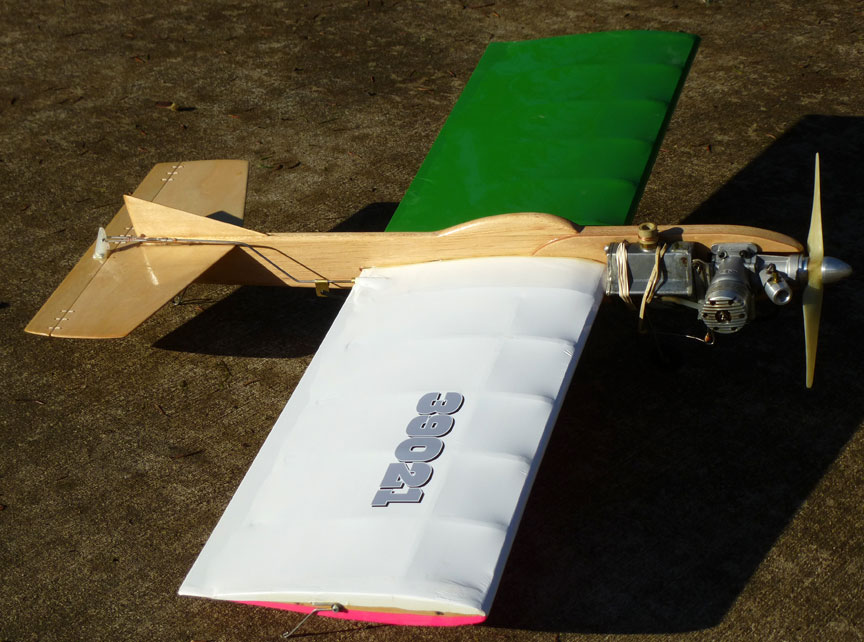
Simple and fast: Mike Hazel of Mehama, Ore., just built this Northwest Super Sport plane, powered by the standard NWSS K&B .40, for the 2022 Racing season. Mike gives details: "Wingspan is 34 inches, and very basic construction. Tailfeathers made from 6"x12" 1/8 inch plywood. Sounds heavy but these planes are usually too nose-heavy and this made it balance nicely. Plus it made for very quick construction. Clear epoxy finish on fuselage and tail, monokote on wings. Ready-to-fly weight is 29-1/2 ounces." The plane was a winner in its first outing, at the 2021 A Day at the Races in Portland, Ore. Mike Hazel photo.
Favorite Planes galleries
2021| 2020 | September-December 2019 | May-August 2019 | January-April 2019 Favorite Planes | October-December 2018 | April-September 2018 | January-March 2018 | October-December 2017 | June-September 2017 | January-May 2017 | October-December 2017 | April-September 2016 | January-March 2016 | November-December 2015 | August-October 2015 | May-July 2015 | January-April 2015 | October-December 2014 | August-September 2014 | April-July 2014 | January-March 2014 | October-December 2013 | July-September 2013 | April-June 2013 | January-March 2013 | September-December 2012 | April-August 2012 | January-March 2012 | October-December 2011 | July-September 2011 | May-June 2011 | January-April 2011 | November-December 2010 | September-October 2010 | June-August 2010 | March-May 2010 | January-February 2010 | September-December 2009 | July-August 2009 | April-June 2009 | February-March 2009 | November 2008-January 2009 | September-October 2008 | June-August 2008 | November 2007-May 2008 | August-October 2007 | June-July 2007 | May 2007 | March-April 2007 | January-February 2007 | November-December 2006 | September-October 2006 | August 2006 | July 2006 | May-June 2006 | April 2006 | March 2006 | February 2006 | January 2006
Flying Lines home page
This page was upated April 27, 2023